 Search by Keyword
|
“CARRY THAT WEIGHT”
(John Lennon – Paul McCartney)
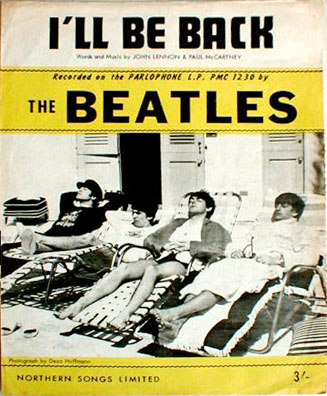 There are quite a few Beatles songs that took shape in the recording studio different from how they were originally conceived by the composer. For instance, John's "Come Together" was originally intended as a Chuck Berry-style rocker until it was transformed into a more subdued swampy-sounding hit song. "I'll Be Back" was attempted in the studio in a Waltz beat, as evidenced on the compilation album "Anthology 1." And Paul's tender acoustic ballad "And I Love Her" was first tried as a full band arrangement with electric guitars and drums. There are quite a few Beatles songs that took shape in the recording studio different from how they were originally conceived by the composer. For instance, John's "Come Together" was originally intended as a Chuck Berry-style rocker until it was transformed into a more subdued swampy-sounding hit song. "I'll Be Back" was attempted in the studio in a Waltz beat, as evidenced on the compilation album "Anthology 1." And Paul's tender acoustic ballad "And I Love Her" was first tried as a full band arrangement with electric guitars and drums.
 However, probably the biggest transformation to a Beatles song from what the composer originally intended would be “Carry That Weight.” As detailed below, Paul McCartney has gone on record to describe what he originally had in mind for the song. He instead decided to abandon this entirely in order to piecemeal a segment of his initial idea into the “Abbey Road” medley to good effect. However, probably the biggest transformation to a Beatles song from what the composer originally intended would be “Carry That Weight.” As detailed below, Paul McCartney has gone on record to describe what he originally had in mind for the song. He instead decided to abandon this entirely in order to piecemeal a segment of his initial idea into the “Abbey Road” medley to good effect.
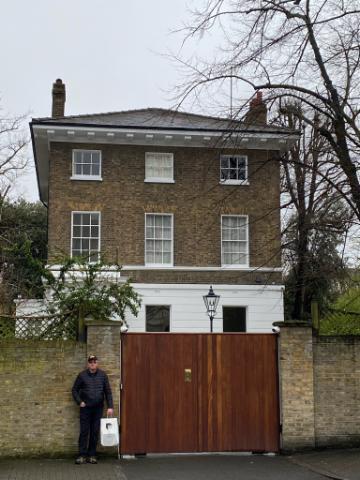
Paul McCartney's home on Cavendish, London
Songwriting History
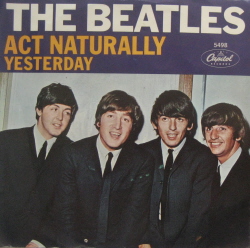 Sometime in late 1968, probably in December at his St. John's Wood home in London, Paul conceived of a rather lighthearted, fast-moving country-and-western song entitled "Carry That Weight." This song was patterned somewhat after the Buck Owens hit "Act Naturally," which The Beatles covered on their 1965 "Help!" album ("Yesterday...And Today" in the US), at Ringo's request. Sometime in late 1968, probably in December at his St. John's Wood home in London, Paul conceived of a rather lighthearted, fast-moving country-and-western song entitled "Carry That Weight." This song was patterned somewhat after the Buck Owens hit "Act Naturally," which The Beatles covered on their 1965 "Help!" album ("Yesterday...And Today" in the US), at Ringo's request.
 Paul envisioned writing verses that would tell a particular story of a person who, despite having a good life, fell upon trivial problems which he then blew out of proportion. Each verse would then segue into the chorus which would repeat the phrase “Boy, you're going to carry that weight, carry that weight a long time,” the main character singing the song in the first person. Paul envisioned writing verses that would tell a particular story of a person who, despite having a good life, fell upon trivial problems which he then blew out of proportion. Each verse would then segue into the chorus which would repeat the phrase “Boy, you're going to carry that weight, carry that weight a long time,” the main character singing the song in the first person.
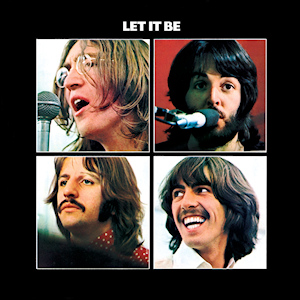 When Paul first introduced the song to the rest of the group on January 6th, 1969, during the rehearsing and recording of what eventually became the "Let It Be" film and soundtrack album, he stated his original intentions for the song. "I have a bit that I might finish," he stated while sitting at an organ. "It might interest him. I was thinking it was a song for Ringo." Since every Beatles album included a song for their drummer to sing, Paul was thinking ahead and intended this country-and-western-style song for Ringo if it appealed to him. When Paul first introduced the song to the rest of the group on January 6th, 1969, during the rehearsing and recording of what eventually became the "Let It Be" film and soundtrack album, he stated his original intentions for the song. "I have a bit that I might finish," he stated while sitting at an organ. "It might interest him. I was thinking it was a song for Ringo." Since every Beatles album included a song for their drummer to sing, Paul was thinking ahead and intended this country-and-western-style song for Ringo if it appealed to him.
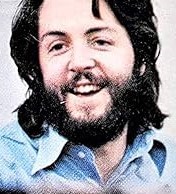 After demonstrating the song to them, with John following along on electric guitar and sometimes joining in on vocals, Paul demonstrated what a verse might sound like even though he hadn't written any verses yet. He sings, "Well, I've been taking it personally / and I see now it wasn't done / but I can't get over the way you treat me wrong / so I've been da, da, da, da..." before mumbling contrived nonsense to give them an idea of what he has in mind. After demonstrating the song to them, with John following along on electric guitar and sometimes joining in on vocals, Paul demonstrated what a verse might sound like even though he hadn't written any verses yet. He sings, "Well, I've been taking it personally / and I see now it wasn't done / but I can't get over the way you treat me wrong / so I've been da, da, da, da..." before mumbling contrived nonsense to give them an idea of what he has in mind.
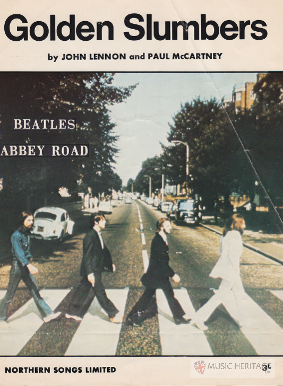 However, this apparently was a passing idea that he never saw to fruition, the end result being that Ringo did not have a song to sing lead vocals on when the "Let It Be" album was eventually released. Instead, with Paul's inspiration for “Golden Slumbers,” he decided by the next day, January 7th, 1969, to slow down the tempo of the chorus of “Carry That Weight” and combine it with this new composition as a medley of sorts. A recording of the rehearsals on this day shows him demonstrating the medley of these two songs on piano. The idea for what became the long “Abbey Road” medley hadn't been thought of yet, but it was later remembered and included therein when that time came. However, this apparently was a passing idea that he never saw to fruition, the end result being that Ringo did not have a song to sing lead vocals on when the "Let It Be" album was eventually released. Instead, with Paul's inspiration for “Golden Slumbers,” he decided by the next day, January 7th, 1969, to slow down the tempo of the chorus of “Carry That Weight” and combine it with this new composition as a medley of sorts. A recording of the rehearsals on this day shows him demonstrating the medley of these two songs on piano. The idea for what became the long “Abbey Road” medley hadn't been thought of yet, but it was later remembered and included therein when that time came.
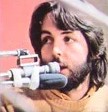 Evidence of the original intention for "Carry That Weight" was recorded on January 9th, 1969. On this day, Paul was sitting at the piano and playing the newly paired medley of “Golden Slumbers / Carry That Weight” to Ringo, this medley undoubtedly being offered up for the “Let It Be” project. In the process, Paul was explaining to Ringo his inspiration for each segment and how they were written. As captured on tape, Paul explained to Ringo how “Carry That Weight” was originally conceived: Evidence of the original intention for "Carry That Weight" was recorded on January 9th, 1969. On this day, Paul was sitting at the piano and playing the newly paired medley of “Golden Slumbers / Carry That Weight” to Ringo, this medley undoubtedly being offered up for the “Let It Be” project. In the process, Paul was explaining to Ringo his inspiration for each segment and how they were written. As captured on tape, Paul explained to Ringo how “Carry That Weight” was originally conceived:
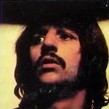 “It's like a story. A bit like 'Act Naturally,' where a tag line keeps coming up, you know, 'so and so and so and so,' but all he said was 'act naturally.' (Paul then demonstrates a proposed indecipherable verse for “Carry That Weight” as it goes into the chorus, which Ringo sings along with.) It's like your troubles, but it was like a comedy when I first heard (conceived) it. (Paul demonstrates the “Carry That Weight” chorus again in his original sped-up tempo, followed by an indecipherable bridge and another chorus with Ringo singing along.) There was a verse about a drunkard who got drunk, got in trouble with the wife, got drunk, so and so and so and so, and 'woke up the next morning with a weight upon my head and found it WAS my head.' (They both laugh as Paul then goes into yet another spirited version of the “Carry That Weight” chorus.) It's sort of the normal kind of troubles that everyone has...It's one of those songs where you've got everything and you've got everything going great but, you know, 'This morning, one of my eggs broke.' It's just so trivial.” Ringo suggests “broke a mirror.” Then Paul suggests, “My right shoe is a bit tight” as a further example. “It's like a story. A bit like 'Act Naturally,' where a tag line keeps coming up, you know, 'so and so and so and so,' but all he said was 'act naturally.' (Paul then demonstrates a proposed indecipherable verse for “Carry That Weight” as it goes into the chorus, which Ringo sings along with.) It's like your troubles, but it was like a comedy when I first heard (conceived) it. (Paul demonstrates the “Carry That Weight” chorus again in his original sped-up tempo, followed by an indecipherable bridge and another chorus with Ringo singing along.) There was a verse about a drunkard who got drunk, got in trouble with the wife, got drunk, so and so and so and so, and 'woke up the next morning with a weight upon my head and found it WAS my head.' (They both laugh as Paul then goes into yet another spirited version of the “Carry That Weight” chorus.) It's sort of the normal kind of troubles that everyone has...It's one of those songs where you've got everything and you've got everything going great but, you know, 'This morning, one of my eggs broke.' It's just so trivial.” Ringo suggests “broke a mirror.” Then Paul suggests, “My right shoe is a bit tight” as a further example.
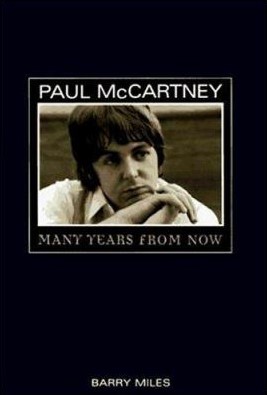 In retrospect, however, Paul gives a much different explanation of the song's inspiration which reflects the struggles of the final months of The Beatles history. In his book “Many Years From Now,” Paul explains: “I'm generally quite upbeat but at certain times things get to me so much that I just can't be upbeat any more and that was one of the times. We were taking so much acid and doing so much drugs and all this Klein sh*t was going on and getting crazier and crazier and crazier. 'Carry that weight a long time'...like forever! That's what I meant.” In retrospect, however, Paul gives a much different explanation of the song's inspiration which reflects the struggles of the final months of The Beatles history. In his book “Many Years From Now,” Paul explains: “I'm generally quite upbeat but at certain times things get to me so much that I just can't be upbeat any more and that was one of the times. We were taking so much acid and doing so much drugs and all this Klein sh*t was going on and getting crazier and crazier and crazier. 'Carry that weight a long time'...like forever! That's what I meant.”
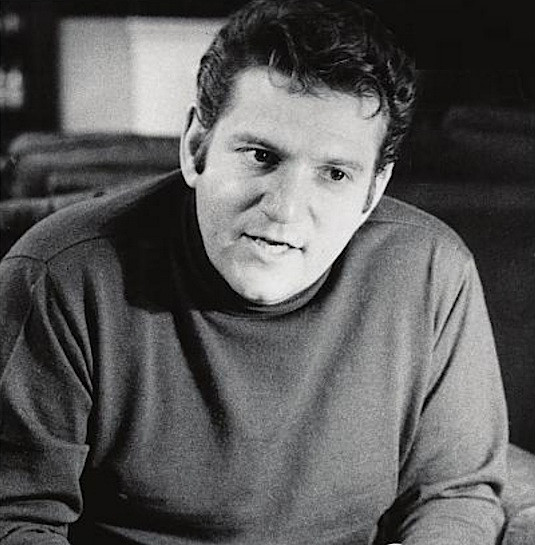 As outlined above, the writing of “Carry That Weight” preceded any involvement with manager Allen Klein, whom Paul fought hard to not have any dealings with despite the other Beatles wanting to work with him. In fact, Allen Klein didn't meet with John about working with the group until January 28th, 1969, which was well after the originally conceived “Carry That Weight” was written. When the song was officially being recorded for the “Abbey Road” album in July and August of that year, negotiations with Allen Klein were very well under way. Therefore, Paul undoubtedly thought the tone of “Carry That Weight” suited the tense situation perfectly and remembered the song as being written about this time period. As John stated in a September 1969 interview, "It's really like the 'Maxwell's Silver Hammer' story again...'we've all got a great load to carry,' he stated in an exaggerated northern English accent. In his 1980 Playboy interview when asked about the writing of “Carry That Weight," John commented: “That's Paul. I think he was under strain in that period.” As outlined above, the writing of “Carry That Weight” preceded any involvement with manager Allen Klein, whom Paul fought hard to not have any dealings with despite the other Beatles wanting to work with him. In fact, Allen Klein didn't meet with John about working with the group until January 28th, 1969, which was well after the originally conceived “Carry That Weight” was written. When the song was officially being recorded for the “Abbey Road” album in July and August of that year, negotiations with Allen Klein were very well under way. Therefore, Paul undoubtedly thought the tone of “Carry That Weight” suited the tense situation perfectly and remembered the song as being written about this time period. As John stated in a September 1969 interview, "It's really like the 'Maxwell's Silver Hammer' story again...'we've all got a great load to carry,' he stated in an exaggerated northern English accent. In his 1980 Playboy interview when asked about the writing of “Carry That Weight," John commented: “That's Paul. I think he was under strain in that period.”
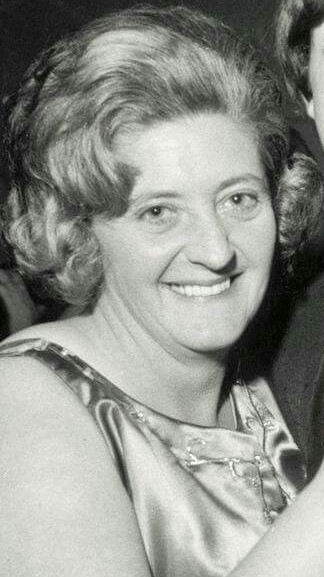 Paul elaborates yet further in “Many Years From Now”: “There was what my Aunty Gin would have called a bad atmosphere – 'Oh, I can feel the atmosphere in this house, love.' It wasn't difficult, she wouldn't have liked it there. It was 'heavy.' 'Heavy' was a very operative word at the time – 'Heavy, man' – but now it actually felt heavy. That's what 'Carry That Weight' was about: not the light, rather easy-going heaviness, albeit witty and sometimes cruel, but with an edge you could exist within and which always had a place for you to be. In this heaviness there was no place to be. It was serious, paranoid heaviness and it was just very uncomfortable." Paul elaborates yet further in “Many Years From Now”: “There was what my Aunty Gin would have called a bad atmosphere – 'Oh, I can feel the atmosphere in this house, love.' It wasn't difficult, she wouldn't have liked it there. It was 'heavy.' 'Heavy' was a very operative word at the time – 'Heavy, man' – but now it actually felt heavy. That's what 'Carry That Weight' was about: not the light, rather easy-going heaviness, albeit witty and sometimes cruel, but with an edge you could exist within and which always had a place for you to be. In this heaviness there was no place to be. It was serious, paranoid heaviness and it was just very uncomfortable."
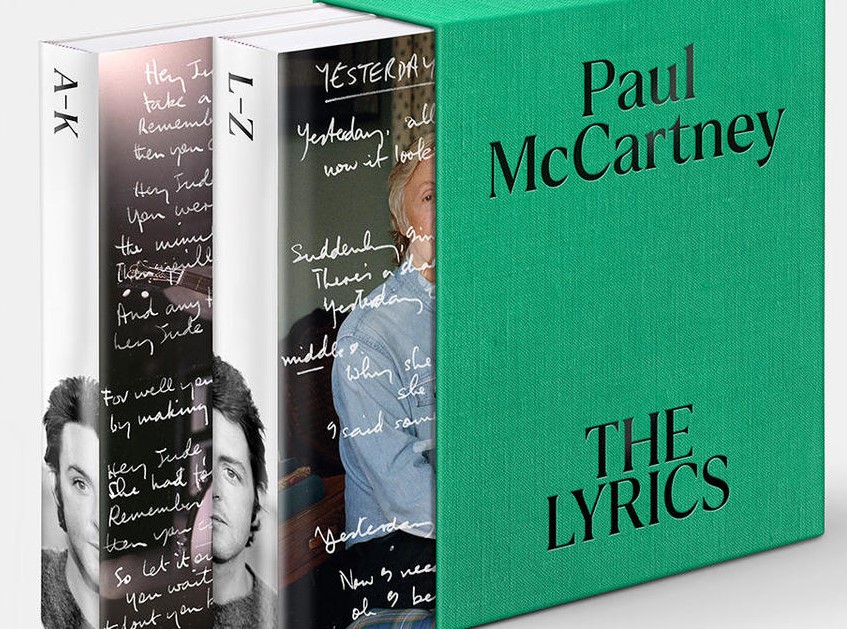 In his 2021 book "The Lyrics," Paul goes even deeper into his recollections (misplaced or not) regarding the meaning of this song. "We were entering a period in the mid- to late sixties when we were doing LSD, staying up all night, then wishing it would wear off, discovering it wouldn't. A bad trip could leave you feeling a bit heavy, instead of enjoying the normal lightness of youth. You know, we started off smoking pot, and it was just giggles. It was such fun. We loved it and it was great, and the worst that would happen was you'd fall asleep, and that was fine. Once it got into sort of more serious stuff, then you were just sort of doing it and there wasn't this light relief. It could be oppressive. That was coupled with the business problems at Apple Records, which really were horrible. The business meetings were just soul-destroying. We'd sit around in an office, and it was a place you just didn't want to be, with people you didn't want to be with...That whole period weighed on me to such an extent that I even began to think it was all tied in with the idea of original sin. Even though my mum had christened me as a Catholic, we weren't brought up Catholic, so I didn't buy into the concept or original sin on a day-to-day basis. It's really very detressing to think that you were born a loser. The idea of carrying a weight may have been influenced by The Band's song 'The Weight.'" In his 2021 book "The Lyrics," Paul goes even deeper into his recollections (misplaced or not) regarding the meaning of this song. "We were entering a period in the mid- to late sixties when we were doing LSD, staying up all night, then wishing it would wear off, discovering it wouldn't. A bad trip could leave you feeling a bit heavy, instead of enjoying the normal lightness of youth. You know, we started off smoking pot, and it was just giggles. It was such fun. We loved it and it was great, and the worst that would happen was you'd fall asleep, and that was fine. Once it got into sort of more serious stuff, then you were just sort of doing it and there wasn't this light relief. It could be oppressive. That was coupled with the business problems at Apple Records, which really were horrible. The business meetings were just soul-destroying. We'd sit around in an office, and it was a place you just didn't want to be, with people you didn't want to be with...That whole period weighed on me to such an extent that I even began to think it was all tied in with the idea of original sin. Even though my mum had christened me as a Catholic, we weren't brought up Catholic, so I didn't buy into the concept or original sin on a day-to-day basis. It's really very detressing to think that you were born a loser. The idea of carrying a weight may have been influenced by The Band's song 'The Weight.'"
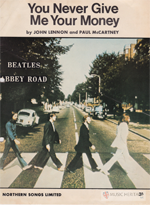 One thing we must keep in mind regarding the writing of the released "Carry That Weight" is that segments of Paul's composition "You Never Give Me Your Money" are weaved in between the choruses of the song, which were written as of July 2nd, 1969, the day that Paul first sang them in the recording studio. In his book "The Lyrics," Paul explains: "There's a great picture that Linda took of Allen Klein, in which he's got a hammer like 'Maxwell's Silver Hammer.' It's very symbolic. And that's why we have the little nod and a wink in the middle section...in the lines, 'I never give you my pillow / I only send you my invitations.'" Therefore, the writing of what we have all come to know as "Carry That Weight" spans approximately from December, 1968 to July 2nd, 1969. One thing we must keep in mind regarding the writing of the released "Carry That Weight" is that segments of Paul's composition "You Never Give Me Your Money" are weaved in between the choruses of the song, which were written as of July 2nd, 1969, the day that Paul first sang them in the recording studio. In his book "The Lyrics," Paul explains: "There's a great picture that Linda took of Allen Klein, in which he's got a hammer like 'Maxwell's Silver Hammer.' It's very symbolic. And that's why we have the little nod and a wink in the middle section...in the lines, 'I never give you my pillow / I only send you my invitations.'" Therefore, the writing of what we have all come to know as "Carry That Weight" spans approximately from December, 1968 to July 2nd, 1969.
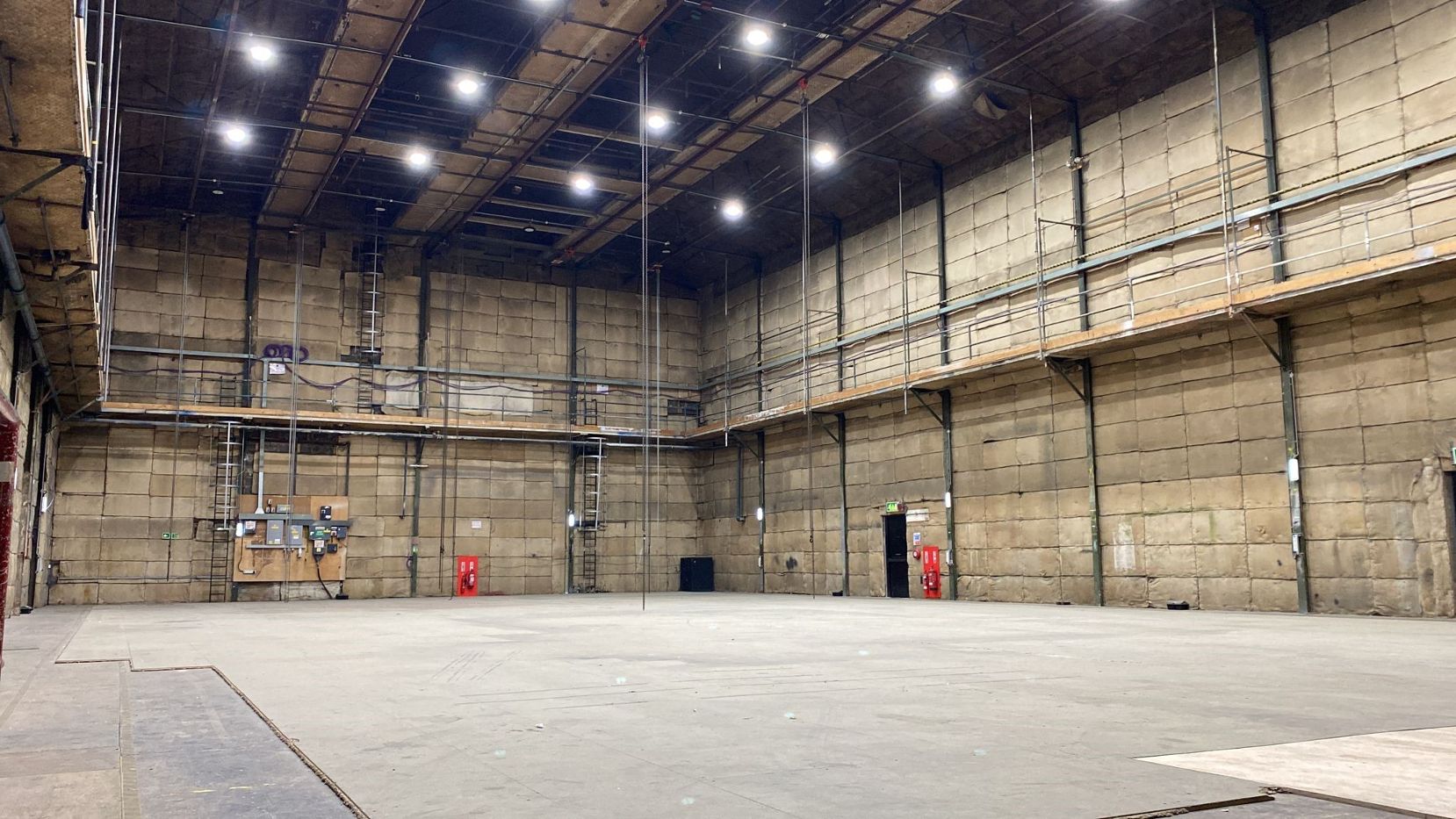
Twickenham Studio
Recording History
As outlined above, the first time "Carry That Weight" was put to tape was on January 6th, 1969 (at precisely 11 am, according to the slate announcement heard on the tape), at Twickenham Film Studios as The Beatles were rehearsing material for what became the "Let It Be" project. Paul's concept for the song at this point was for it to become a country-and-western-style song for Ringo to sing, George being briefly instructed as to what the chords were. Four attempts at playing the song were made, with Paul on organ and vocals, John on electric guitar and periodic backing vocals, and George making attemps at joining in on piano.
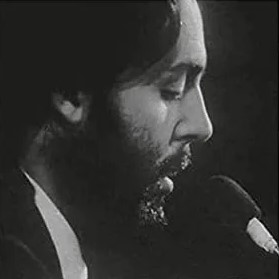 On the next day, January 7th, 1969, Paul rehearsed the song again, but this time in a medley form with “Golden Slumbers” as we all have come to know it. This was performed by Paul alone on piano. This apparently was the day that Paul decided to pair the two songs together, only using the chorus of “Carry That Weight” and scrapping the country-and-western song idea. On the next day, January 7th, 1969, Paul rehearsed the song again, but this time in a medley form with “Golden Slumbers” as we all have come to know it. This was performed by Paul alone on piano. This apparently was the day that Paul decided to pair the two songs together, only using the chorus of “Carry That Weight” and scrapping the country-and-western song idea.
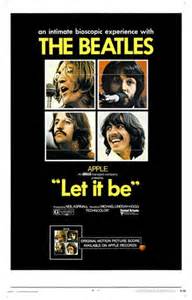 Then on January 9th, 1969, as detailed above, Paul sat at the piano with Ringo and rehearsed the “Golden Slumbers / Carry That Weight” medley for him, explaining the origins of both compositions. Since this medley was dropped entirely for the remainder of the month-long rehearsals and sessions that became the “Let It Be” film and album, this composition was apparently viewed as a lesser priority and was shelved for the time being. Then on January 9th, 1969, as detailed above, Paul sat at the piano with Ringo and rehearsed the “Golden Slumbers / Carry That Weight” medley for him, explaining the origins of both compositions. Since this medley was dropped entirely for the remainder of the month-long rehearsals and sessions that became the “Let It Be” film and album, this composition was apparently viewed as a lesser priority and was shelved for the time being.
 It wasn't until the decision was made to make one final Beatles album that Paul dusted off the “Golden Slumbers / Carry That Weight” medley and brought it to EMI Studio Two to record. It was the second session after that decision was made, on July 2nd, 1969, that Paul, George and Ringo laid down the rhythm track for the song, John being hospitalized at the time because of a road accident he had during a vacation in Scotland. It wasn't until the decision was made to make one final Beatles album that Paul dusted off the “Golden Slumbers / Carry That Weight” medley and brought it to EMI Studio Two to record. It was the second session after that decision was made, on July 2nd, 1969, that Paul, George and Ringo laid down the rhythm track for the song, John being hospitalized at the time because of a road accident he had during a vacation in Scotland.
 Paul entered the studio by himself earlier in the day and recorded his short song “Her Majesty” for consideration of it being used in the “Abbey Road” medley. Engineer Geoff Emerick, in his book “Here, There And Everywhere,” recounts the events of the rest of the day, starting at approximately 5 pm. “Later that same day, after Ringo and George Harrison arrived, the three Beatles recorded the backing track for 'Golden Slumbers / Carry That Weight.' The two songs were joined together even at that early stage because Paul had already come up with the idea of linking up several short snippets into a medley of sorts. No one was sure how John would react, but we got on with the work anyway. There seemed to be an assumption that he would go along with it, and that this time around, in contrast to the 'White Album,' he wouldn't be calling all the shots." In a May 1969 interview, John spoke about "a kind of song montage that we might do as one piece on one side" of their next album, showing that John was definitely agreeable to creating this medley. Paul entered the studio by himself earlier in the day and recorded his short song “Her Majesty” for consideration of it being used in the “Abbey Road” medley. Engineer Geoff Emerick, in his book “Here, There And Everywhere,” recounts the events of the rest of the day, starting at approximately 5 pm. “Later that same day, after Ringo and George Harrison arrived, the three Beatles recorded the backing track for 'Golden Slumbers / Carry That Weight.' The two songs were joined together even at that early stage because Paul had already come up with the idea of linking up several short snippets into a medley of sorts. No one was sure how John would react, but we got on with the work anyway. There seemed to be an assumption that he would go along with it, and that this time around, in contrast to the 'White Album,' he wouldn't be calling all the shots." In a May 1969 interview, John spoke about "a kind of song montage that we might do as one piece on one side" of their next album, showing that John was definitely agreeable to creating this medley.
 Fifteen takes of the rhythm track were recorded on this day, the instrumentation being Ringo on drums (track one), George on Fender Bass VI (track two) and Paul on piano (track three) and guide vocal (track eight). Interestingly, even though “Golden Slumbers” and “Carry That Weight” were stipulated as two individual songs on the finished album, the documentation at this point indicated that the title of this entire rhythm track was “Golden Slumbers.” Not all of the 15 takes of the rhythm track that they performed made it to the "Carry That Weight" segment of the song, these performance breaking down early in order to get a satisfactory performance. "Take one," however, which is included in various 50th Anniversary editions of "Abbey Road," does get to the first chorus of "Carry That Weight," but breaks down in the fifth measure despite their spirited delivery. "Take 15" did make it through the entire "Carry That Weight" segment, this being considered as the keeper for the rhythm track at the time. This recording session concluded at 9:30 pm. Fifteen takes of the rhythm track were recorded on this day, the instrumentation being Ringo on drums (track one), George on Fender Bass VI (track two) and Paul on piano (track three) and guide vocal (track eight). Interestingly, even though “Golden Slumbers” and “Carry That Weight” were stipulated as two individual songs on the finished album, the documentation at this point indicated that the title of this entire rhythm track was “Golden Slumbers.” Not all of the 15 takes of the rhythm track that they performed made it to the "Carry That Weight" segment of the song, these performance breaking down early in order to get a satisfactory performance. "Take one," however, which is included in various 50th Anniversary editions of "Abbey Road," does get to the first chorus of "Carry That Weight," but breaks down in the fifth measure despite their spirited delivery. "Take 15" did make it through the entire "Carry That Weight" segment, this being considered as the keeper for the rhythm track at the time. This recording session concluded at 9:30 pm.
 The following day, July 3rd, 1969, was devoted entirely to additional work on the “Golden Slumbers / Carry That Weight” medley. As the session began at 3 pm in EMI Studio Two, the first order of business was editing together "take 13" and "take 15" to create a satisfactory rhythm track for overdubbing purposes. Once this was edited together, the result still being called "take 13," the three Beatles took to adding various elements (John still being hospitalized). Onto track four, Ringo added some extra drum beats and Paul added more vocals. Also on track four, Ringo and Paul overdubbed their spirited "carry that weight" vocals in both choruses, Ringo's voice being up front in consideration of this song originally being intended for his vocals. These vocals were then overdubbed onto track seven of the tape for added emphasis. Mark Lewisohn's book "The Beatles Recording Sessions" stipulates that both Paul and George added guitar parts to the song on this day, most likely including Paul reprising John's travis-picking guitar work from "You Never Give Me Your Money" for the final seconds of "Carry That Weight." This guitar part was played through a rotating Leslie speaker to create a thick swirling effect. The following day, July 3rd, 1969, was devoted entirely to additional work on the “Golden Slumbers / Carry That Weight” medley. As the session began at 3 pm in EMI Studio Two, the first order of business was editing together "take 13" and "take 15" to create a satisfactory rhythm track for overdubbing purposes. Once this was edited together, the result still being called "take 13," the three Beatles took to adding various elements (John still being hospitalized). Onto track four, Ringo added some extra drum beats and Paul added more vocals. Also on track four, Ringo and Paul overdubbed their spirited "carry that weight" vocals in both choruses, Ringo's voice being up front in consideration of this song originally being intended for his vocals. These vocals were then overdubbed onto track seven of the tape for added emphasis. Mark Lewisohn's book "The Beatles Recording Sessions" stipulates that both Paul and George added guitar parts to the song on this day, most likely including Paul reprising John's travis-picking guitar work from "You Never Give Me Your Money" for the final seconds of "Carry That Weight." This guitar part was played through a rotating Leslie speaker to create a thick swirling effect.
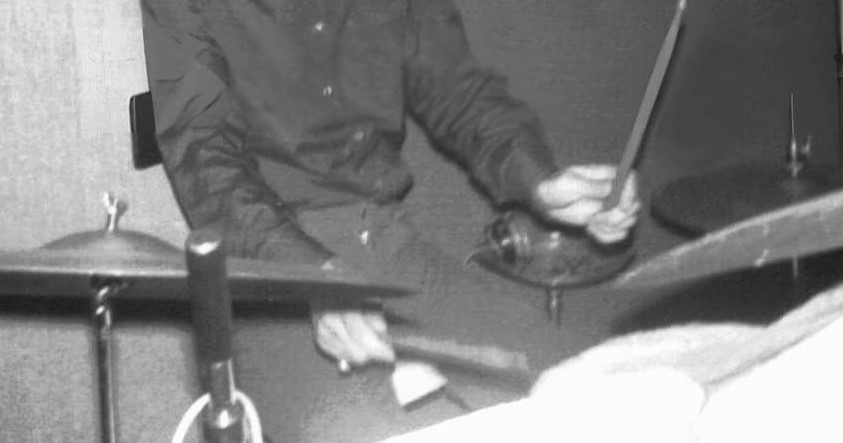 With this complete, it was seen that all eight tracks of the tape were full. Therefore, a reduction mix was needed to open up yet more tracks for further overdubs. Two attempts at the reduction mix were made, documented as "take 16" and "take 17," the latter being deemed best, which transferred Ringo's newly recorded drum work from track four onto track one with his original rhythm track performance, thus creating a deeper percussive sound. This recording session was complete by 8:30 pm. With this complete, it was seen that all eight tracks of the tape were full. Therefore, a reduction mix was needed to open up yet more tracks for further overdubs. Two attempts at the reduction mix were made, documented as "take 16" and "take 17," the latter being deemed best, which transferred Ringo's newly recorded drum work from track four onto track one with his original rhythm track performance, thus creating a deeper percussive sound. This recording session was complete by 8:30 pm.
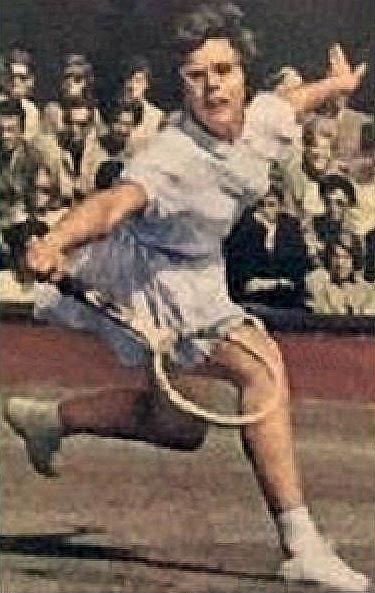 There was one unidentified overdub that was recorded onto the newly reduced recording of the song on the following day, July 4th, 1969, although the identity of this overdub is not documented anywhere. This session ran from 2:45 to 5:30 pm in EMI Studio Two, attention being paid to the Wimbledon Ladies' tennis match between Britain's Ann Jones and America's Billie-Jean King during the proceedings. It can be presumed that Paul put in another attempt at nailing the perfect lead vocal performance on this day. There was one unidentified overdub that was recorded onto the newly reduced recording of the song on the following day, July 4th, 1969, although the identity of this overdub is not documented anywhere. This session ran from 2:45 to 5:30 pm in EMI Studio Two, attention being paid to the Wimbledon Ladies' tennis match between Britain's Ann Jones and America's Billie-Jean King during the proceedings. It can be presumed that Paul put in another attempt at nailing the perfect lead vocal performance on this day.
 “Golden Slumbers / Carry That Weight” was then shelved for about a month so that work on many other “Abbey Road” tracks could be done, John being released from the hospital during this time. Work did resume on the composite track, which was now finally documented as “Golden Slumbers / Carry That Weight,” on July 30th, 1969 in EMI Studio Three. The Beatles entered the studio at 3:30 pm for overdubs on various “Abbey Road” tracks, Paul adding yet more vocals onto “Carry That Weight” at this time, quite possibly the harmonies for the "I never give you my pillow" segment of the song. “Golden Slumbers / Carry That Weight” was then shelved for about a month so that work on many other “Abbey Road” tracks could be done, John being released from the hospital during this time. Work did resume on the composite track, which was now finally documented as “Golden Slumbers / Carry That Weight,” on July 30th, 1969 in EMI Studio Three. The Beatles entered the studio at 3:30 pm for overdubs on various “Abbey Road” tracks, Paul adding yet more vocals onto “Carry That Weight” at this time, quite possibly the harmonies for the "I never give you my pillow" segment of the song.
 With this accomplished, they moved into the control room of EMI Studio Two at 10:30 pm to put together a mock-up of what the long side-two medley would sound like, to see if all the song fragments could be edited together seamlessly. The first order of business, however, was to treat all of these recordings to a stereo mix, the “Golden Slumbers / Carry That Weight” segment being mixed by George Martin and engineers Geoff Emerick, Phil McDonald and John Kurlander. All of these preliminary stereo mixes were then edited together and, with some discussion about tweaking some of the other tracks, the medley was seen to be workable. This trial edit can be heard on various 50th Anniversary editions of "Abbey Road." The proper mixing and editing would be done at a later time. This session then ended at 2:30 am the following morning. With this accomplished, they moved into the control room of EMI Studio Two at 10:30 pm to put together a mock-up of what the long side-two medley would sound like, to see if all the song fragments could be edited together seamlessly. The first order of business, however, was to treat all of these recordings to a stereo mix, the “Golden Slumbers / Carry That Weight” segment being mixed by George Martin and engineers Geoff Emerick, Phil McDonald and John Kurlander. All of these preliminary stereo mixes were then edited together and, with some discussion about tweaking some of the other tracks, the medley was seen to be workable. This trial edit can be heard on various 50th Anniversary editions of "Abbey Road." The proper mixing and editing would be done at a later time. This session then ended at 2:30 am the following morning.
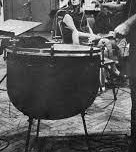 On the next day, July 31st, 1969, The Beatles entered EMI Studio Two at 2:30 pm for yet another overdub session. After working on “You Never Give Me Your Money,” attention turned back to the “Carry That Weight” section of the medley. More lead vocals were overdubbed, as well as George's lead guitar passage just before the lyrics "I never give you my pillow" are heard. The playing of timpani was also recorded on this day and, while phtographic evendence shows both Ringo and Paul attempted to achieve the right timpani sound, the documentation doesn't reveal whose performance actually made it onto the finished recording. The percussive-savvy Ringo seems the most likely choice. This session ended at 1:15 am the next morning. On the next day, July 31st, 1969, The Beatles entered EMI Studio Two at 2:30 pm for yet another overdub session. After working on “You Never Give Me Your Money,” attention turned back to the “Carry That Weight” section of the medley. More lead vocals were overdubbed, as well as George's lead guitar passage just before the lyrics "I never give you my pillow" are heard. The playing of timpani was also recorded on this day and, while phtographic evendence shows both Ringo and Paul attempted to achieve the right timpani sound, the documentation doesn't reveal whose performance actually made it onto the finished recording. The percussive-savvy Ringo seems the most likely choice. This session ended at 1:15 am the next morning.
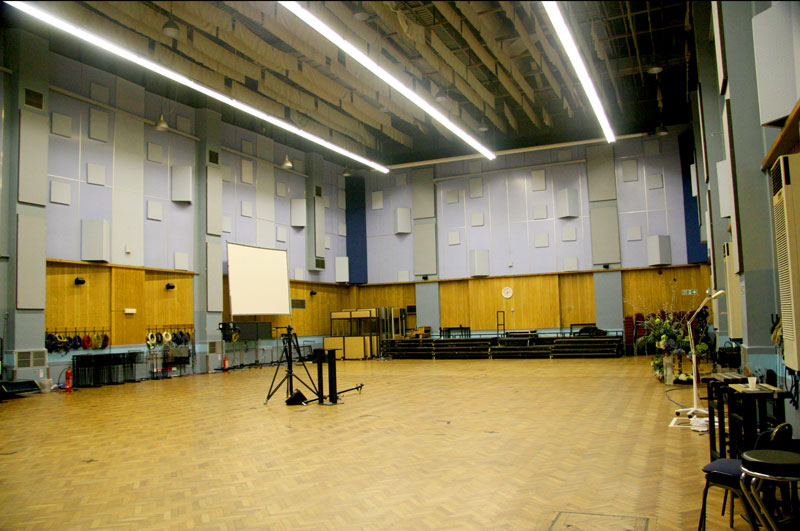 The orchestral overdub occurred on August 15th, 1969 in EMI Studio One, the session beginning at 2:30 pm. There was a snag regarding this session, however, as Geoff Emerick explains: “EMI had still not installed an eight-track tape recorder or large-scale console into the Studio One control room, so we were forced to set up a complicated system of audio tie-lines and closed-circuit television that allowed the musicians to be seated in the larger Studio One while we recorded them in the control room of Studio Two.” The orchestral overdub occurred on August 15th, 1969 in EMI Studio One, the session beginning at 2:30 pm. There was a snag regarding this session, however, as Geoff Emerick explains: “EMI had still not installed an eight-track tape recorder or large-scale console into the Studio One control room, so we were forced to set up a complicated system of audio tie-lines and closed-circuit television that allowed the musicians to be seated in the larger Studio One while we recorded them in the control room of Studio Two.”
 This session focused on segments of the long medley that were primarily Paul's compositions, namely “Golden Slumbers / Carry That Weight” and “The End.” Geoff Emerick continues: “Following the pattern that had been established for much of the album, the only Beatle at (this) session was Paul...(Engineer) Phil McDonald, however, was there with me – working in two studios at once really complicated things, and we needed the extra pair of hands. George Martin did the conducting while (Paul) essentially produced his own session. Thankfully, there were no major technical mishaps and everything worked smoothly.” Engineer Alan Brown remembers, as interviewed for the book “The Beatles Recording Sessions”: “It was a mammoth session. We had a large number of lines linking the studios and we were all walking around the building with walkie-talkies trying to communicate with each other...It cost a lot of money: all the musicians have to be paid, fed and watered; I screw every pound note out of it whenever I play the record!” This session focused on segments of the long medley that were primarily Paul's compositions, namely “Golden Slumbers / Carry That Weight” and “The End.” Geoff Emerick continues: “Following the pattern that had been established for much of the album, the only Beatle at (this) session was Paul...(Engineer) Phil McDonald, however, was there with me – working in two studios at once really complicated things, and we needed the extra pair of hands. George Martin did the conducting while (Paul) essentially produced his own session. Thankfully, there were no major technical mishaps and everything worked smoothly.” Engineer Alan Brown remembers, as interviewed for the book “The Beatles Recording Sessions”: “It was a mammoth session. We had a large number of lines linking the studios and we were all walking around the building with walkie-talkies trying to communicate with each other...It cost a lot of money: all the musicians have to be paid, fed and watered; I screw every pound note out of it whenever I play the record!”
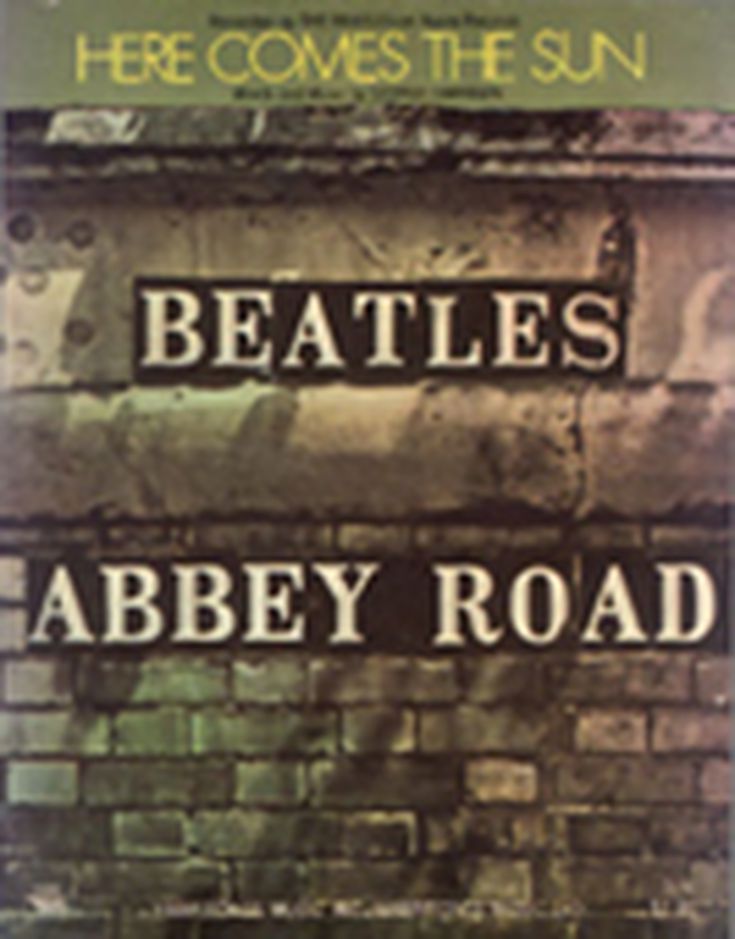 This orchestral session, the actual musicians not being documented, ended the recording of “Golden Slumbers / Carry That Weight.” It only took a total of three hours to record the orchestra for both this track and “The End,” George Martin's orchestral score being followed to the tee by professional studio musicians. This afternoon session ended at 5:30 pm, all personnel leaving until 7 pm when the orchestral overdubs for George Harrison's “Something” and “Here Comes The Sun” were recorded for the evening session. This orchestral session, the actual musicians not being documented, ended the recording of “Golden Slumbers / Carry That Weight.” It only took a total of three hours to record the orchestra for both this track and “The End,” George Martin's orchestral score being followed to the tee by professional studio musicians. This afternoon session ended at 5:30 pm, all personnel leaving until 7 pm when the orchestral overdubs for George Harrison's “Something” and “Here Comes The Sun” were recorded for the evening session.
 August 18th, 1969, was the date that the official stereo mix of “Golden Slumbers / Carry That Weight” took place. The session began at 2:30 pm in the control room of EMI Studio Two, two attempts at a stereo mix being made by George Martin and engineers Geoff Emerick, Phil McDonald and Alan Parsons. The second remix was deemed suitable, after which they turned their attention to the song “The End.” This session ended at 10:30 pm. August 18th, 1969, was the date that the official stereo mix of “Golden Slumbers / Carry That Weight” took place. The session began at 2:30 pm in the control room of EMI Studio Two, two attempts at a stereo mix being made by George Martin and engineers Geoff Emerick, Phil McDonald and Alan Parsons. The second remix was deemed suitable, after which they turned their attention to the song “The End.” This session ended at 10:30 pm.
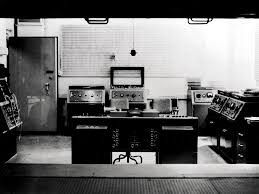 On the next day, August 19th, 1969, the same engineering team assembled in the control room of EMI Studio Two at 2 pm. Among the work done on this day was performing the cross-fade/edit between “Carry That Weight” and “The End.” After more stereo mixing and overdubbing was accomplished on other “Abbey Road” songs, this session was complete at 4 pm. On the next day, August 19th, 1969, the same engineering team assembled in the control room of EMI Studio Two at 2 pm. Among the work done on this day was performing the cross-fade/edit between “Carry That Weight” and “The End.” After more stereo mixing and overdubbing was accomplished on other “Abbey Road” songs, this session was complete at 4 pm.
 Sometime in 2019, George Martin's son Giles Martin, along with engineer Sam Okell, returned to the master tapes of "Golden Slumbers" and "Carry That Weight" to create a vibrant new stereo mix for inclusion on various 50th Anniversary editions of "Abbey Road." They also created a mix of "take one," "take two" and "take three" of this composite track, all incomplete, for inclusion on some editions of of this special release, as well as the trial edit and mix of the entire "Abbey Road" medley from July 30th, 1969 and the isolated orchestral score of the song as recorded on August 15th, 1969. Sometime in 2019, George Martin's son Giles Martin, along with engineer Sam Okell, returned to the master tapes of "Golden Slumbers" and "Carry That Weight" to create a vibrant new stereo mix for inclusion on various 50th Anniversary editions of "Abbey Road." They also created a mix of "take one," "take two" and "take three" of this composite track, all incomplete, for inclusion on some editions of of this special release, as well as the trial edit and mix of the entire "Abbey Road" medley from July 30th, 1969 and the isolated orchestral score of the song as recorded on August 15th, 1969.
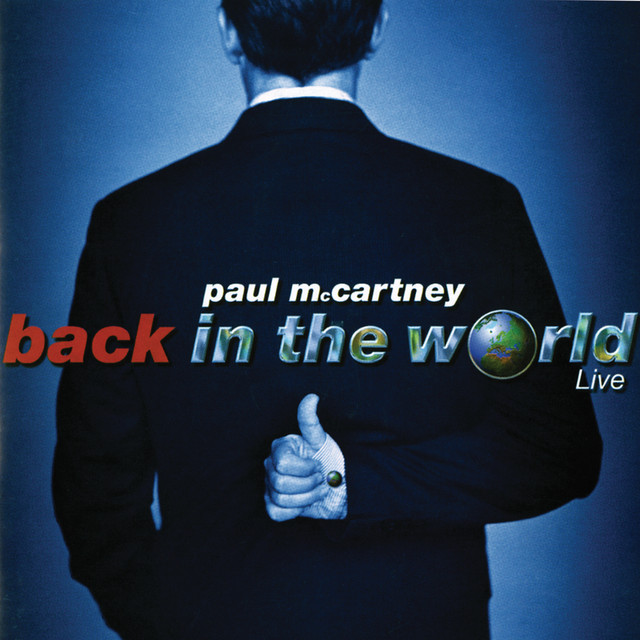 Paul and his touring band recorded a live version of “Carry That Weight” in medley with “Golden Slumbers” and “The End” as heard on the “Abbey Road” album on December 9th, 1989 in Montreal, Canada. This recording was released on both his albums “Tripping The Live Fantastic” and "Tripping The Live Fantastic: Highlights!" Another interesting live medley including "Carry That Weight" was recorded by Paul solo at his piano on May 15th, 2002 at the Tampa, Florida Ice Palace during his "Driving World Tour," this recording being included on both his "Back In The US" and "Back In The World" albums. This was a newly styled medley of "You Never Give Me Your Money" that transistions into "Carry That Weight" and then back into the first song for its conclusion. Paul and his touring band recorded a live version of “Carry That Weight” in medley with “Golden Slumbers” and “The End” as heard on the “Abbey Road” album on December 9th, 1989 in Montreal, Canada. This recording was released on both his albums “Tripping The Live Fantastic” and "Tripping The Live Fantastic: Highlights!" Another interesting live medley including "Carry That Weight" was recorded by Paul solo at his piano on May 15th, 2002 at the Tampa, Florida Ice Palace during his "Driving World Tour," this recording being included on both his "Back In The US" and "Back In The World" albums. This was a newly styled medley of "You Never Give Me Your Money" that transistions into "Carry That Weight" and then back into the first song for its conclusion.
Song Structure and Style
The "Carry That Weight" section of the "Abbey Road" medley consists of two elements repeated twice, namely 'chorus/ verse (instrumental)/ verse/ chorus' (or abba) with a brief conclusion tacked on at the end. The verse is actually a reprise of the verses heard in the very first section of the medley, "You Never Give Me Your Money," which acts as a suitable tie-in for the closing minutes of the entire medley.
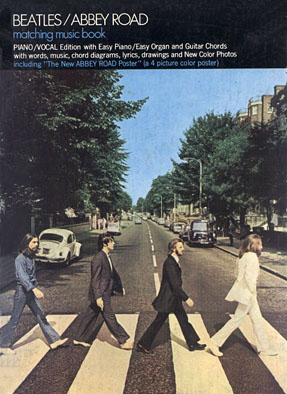 After a brief introductory drum fill from Ringo, which is actually a continuation of the final measure of the previous track “Golden Slumbers,” an eight-measure chorus is heard first. The instrumentation consists of Paul on piano and rhythm guitar, George on bass, Ringo on drums and timpani beats, and a vibrant vocal chorus of Ringo and Paul singing in unison the lyric line “Boy, you're gonna carry that weight / carry that weight a long time” repeated twice. Also heard prominently is the orchestra playing a simple George Martin score that acts as a backdrop to the vocals as the focal point. Ringo puts in three drum fills during this chorus, in measures two, four, and then eight as a transition to the verse that follows. After a brief introductory drum fill from Ringo, which is actually a continuation of the final measure of the previous track “Golden Slumbers,” an eight-measure chorus is heard first. The instrumentation consists of Paul on piano and rhythm guitar, George on bass, Ringo on drums and timpani beats, and a vibrant vocal chorus of Ringo and Paul singing in unison the lyric line “Boy, you're gonna carry that weight / carry that weight a long time” repeated twice. Also heard prominently is the orchestra playing a simple George Martin score that acts as a backdrop to the vocals as the focal point. Ringo puts in three drum fills during this chorus, in measures two, four, and then eight as a transition to the verse that follows.
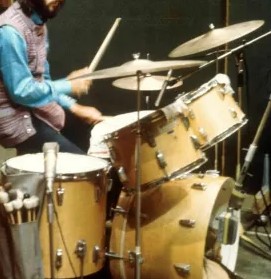 Next comes the first of two consecutive verses, the first being entirely instrumental and only seven measures long. The first four measures are highlighted by the orchestra which plays the “You Never Give Me Your Money” melody line in the score with Paul on piano and rhythm guitar, George on bass and Ringo on drums. Starting with a crashing cymbal on the downbeat, Ringo accentuates prominent beats of the melody line that is being played, adding a drum fill in measures two, three and four for good measure. The remaining three measures of the verse have Ringo playing a straight 4/4 drum beat using the hi-hat while the orchestra lays down a lush backing to highlight a masterful lead guitar line from George. Paul's piano and rhythm guitar, as well as George's bass, are still there to fill out the arrangement. Next comes the first of two consecutive verses, the first being entirely instrumental and only seven measures long. The first four measures are highlighted by the orchestra which plays the “You Never Give Me Your Money” melody line in the score with Paul on piano and rhythm guitar, George on bass and Ringo on drums. Starting with a crashing cymbal on the downbeat, Ringo accentuates prominent beats of the melody line that is being played, adding a drum fill in measures two, three and four for good measure. The remaining three measures of the verse have Ringo playing a straight 4/4 drum beat using the hi-hat while the orchestra lays down a lush backing to highlight a masterful lead guitar line from George. Paul's piano and rhythm guitar, as well as George's bass, are still there to fill out the arrangement.
 The second verse is now heard which is eight measures long and is a vocal verse. While Ringo plays virtually identically to his playing in the previous instrumental verse for the first seven measures, accents and all, Paul sings lead vocals using lyrics similar to, but not identical to, the second verse of “You Never Give Me Your Money.” For instance, “number” is now “pillow,” and “situations” is now “invitations.” Once again the orchestra provides a simple backdrop for the vocals while Paul continues on piano and rhythm guitar and George on bass. Paul is heard singing both lead and harmony vocals during this segment as well. The eighth measure then acts as a segue into the repeat of the chorus that follows, the trumpets of the orchestra heralding in the change with accented drum beats from Ringo and piano chords from Paul also playing their part. The second verse is now heard which is eight measures long and is a vocal verse. While Ringo plays virtually identically to his playing in the previous instrumental verse for the first seven measures, accents and all, Paul sings lead vocals using lyrics similar to, but not identical to, the second verse of “You Never Give Me Your Money.” For instance, “number” is now “pillow,” and “situations” is now “invitations.” Once again the orchestra provides a simple backdrop for the vocals while Paul continues on piano and rhythm guitar and George on bass. Paul is heard singing both lead and harmony vocals during this segment as well. The eighth measure then acts as a segue into the repeat of the chorus that follows, the trumpets of the orchestra heralding in the change with accented drum beats from Ringo and piano chords from Paul also playing their part.
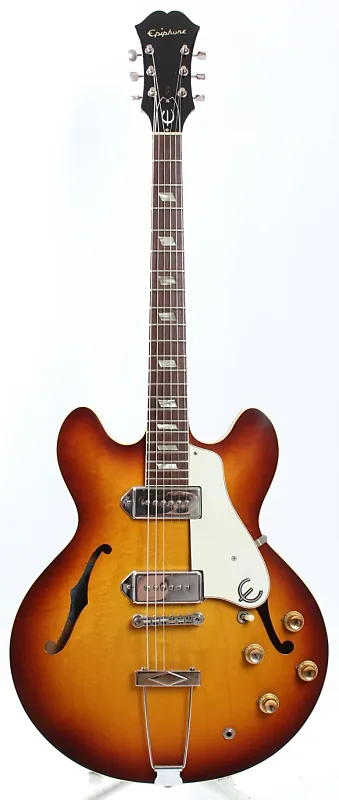 The final part of this section of the medley is then heard, this being the second chorus. Instrumentally and vocally, it is identical to the first chorus, although it can be said to be seven measures long this time instead of eight. After the seventh measure completes, which is midway through the phrase “long time,” the arrangement transcends into yet another reprise of “You Never Give Me Your Money,” this being the final segment of the previous selection with the winding guitar riff and lyric “all good children go to heaven.” These vocals aren't sung here, but the winding guitar riff is repeated twice during this four-measure conclusion. Although John played the winding guitar riff on the previously mentioned track, he appears to not have been involved in “Carry That Weight” at all. Paul apparently takes on John's role suitably this time around. The final part of this section of the medley is then heard, this being the second chorus. Instrumentally and vocally, it is identical to the first chorus, although it can be said to be seven measures long this time instead of eight. After the seventh measure completes, which is midway through the phrase “long time,” the arrangement transcends into yet another reprise of “You Never Give Me Your Money,” this being the final segment of the previous selection with the winding guitar riff and lyric “all good children go to heaven.” These vocals aren't sung here, but the winding guitar riff is repeated twice during this four-measure conclusion. Although John played the winding guitar riff on the previously mentioned track, he appears to not have been involved in “Carry That Weight” at all. Paul apparently takes on John's role suitably this time around.
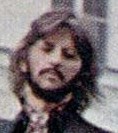 Ringo plays similarly to what he did in the previous track while Paul and George finish out the arrangement here appropriately and the orchestra plods on as well. While the recorded track ends on the final note of the winding guitar riff, which is the anticipated three-beat of the fourth measure, the engineers performed their edit just before this beat, replacing it with the first note of the song “The End,” which appropriately ends the long “Abbey Road” medley. Ringo plays similarly to what he did in the previous track while Paul and George finish out the arrangement here appropriately and the orchestra plods on as well. While the recorded track ends on the final note of the winding guitar riff, which is the anticipated three-beat of the fourth measure, the engineers performed their edit just before this beat, replacing it with the first note of the song “The End,” which appropriately ends the long “Abbey Road” medley.
American Releases
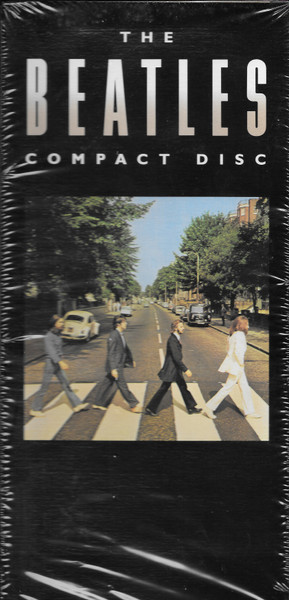 On October 1st, 1969, the final recorded Beatles album was released in America, simple titled "Abbey Road." "Carry That Weight" is the ninth track on side two of the album and the seventh named track of the long medley that fills the majority of this second side of the album. The "Abbey Road" album took only three weeks to jump into the top spot on the Billboard album chart, raking in a total of eleven weeks in the #1 position. The album first appeared on compact disc on October 10th, 1987, and then as a remastered release on September 9th, 2009. A 50th Anniversary edition of "Abbey Road" was released on September 27th, 2019 on both CD and 180-gram vinyl, not to mention an opaque green vinyl edition coming out on October 10th, 2025 as an exclusive release available only at Target Department Stores. On October 1st, 1969, the final recorded Beatles album was released in America, simple titled "Abbey Road." "Carry That Weight" is the ninth track on side two of the album and the seventh named track of the long medley that fills the majority of this second side of the album. The "Abbey Road" album took only three weeks to jump into the top spot on the Billboard album chart, raking in a total of eleven weeks in the #1 position. The album first appeared on compact disc on October 10th, 1987, and then as a remastered release on September 9th, 2009. A 50th Anniversary edition of "Abbey Road" was released on September 27th, 2019 on both CD and 180-gram vinyl, not to mention an opaque green vinyl edition coming out on October 10th, 2025 as an exclusive release available only at Target Department Stores.
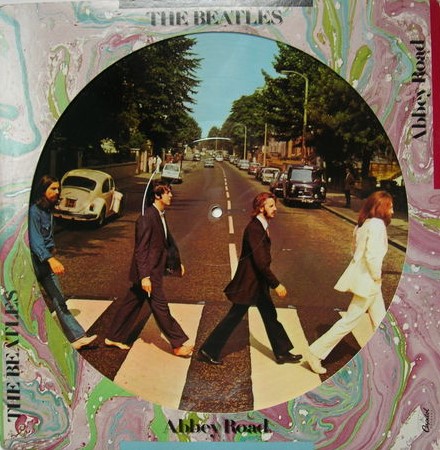 Sometime in 1978, Capitol re-released the “Abbey Road” album as a picture disc. Side one had the iconic front cover while side two contained a close-up of the wall photo of the back cover minus the song title listings. This release quickly went out of print but was re-released on September 27th, 2019 on 180-gram vinyl to commemorate its 50th Anniversary. Sometime in 1978, Capitol re-released the “Abbey Road” album as a picture disc. Side one had the iconic front cover while side two contained a close-up of the wall photo of the back cover minus the song title listings. This release quickly went out of print but was re-released on September 27th, 2019 on 180-gram vinyl to commemorate its 50th Anniversary.
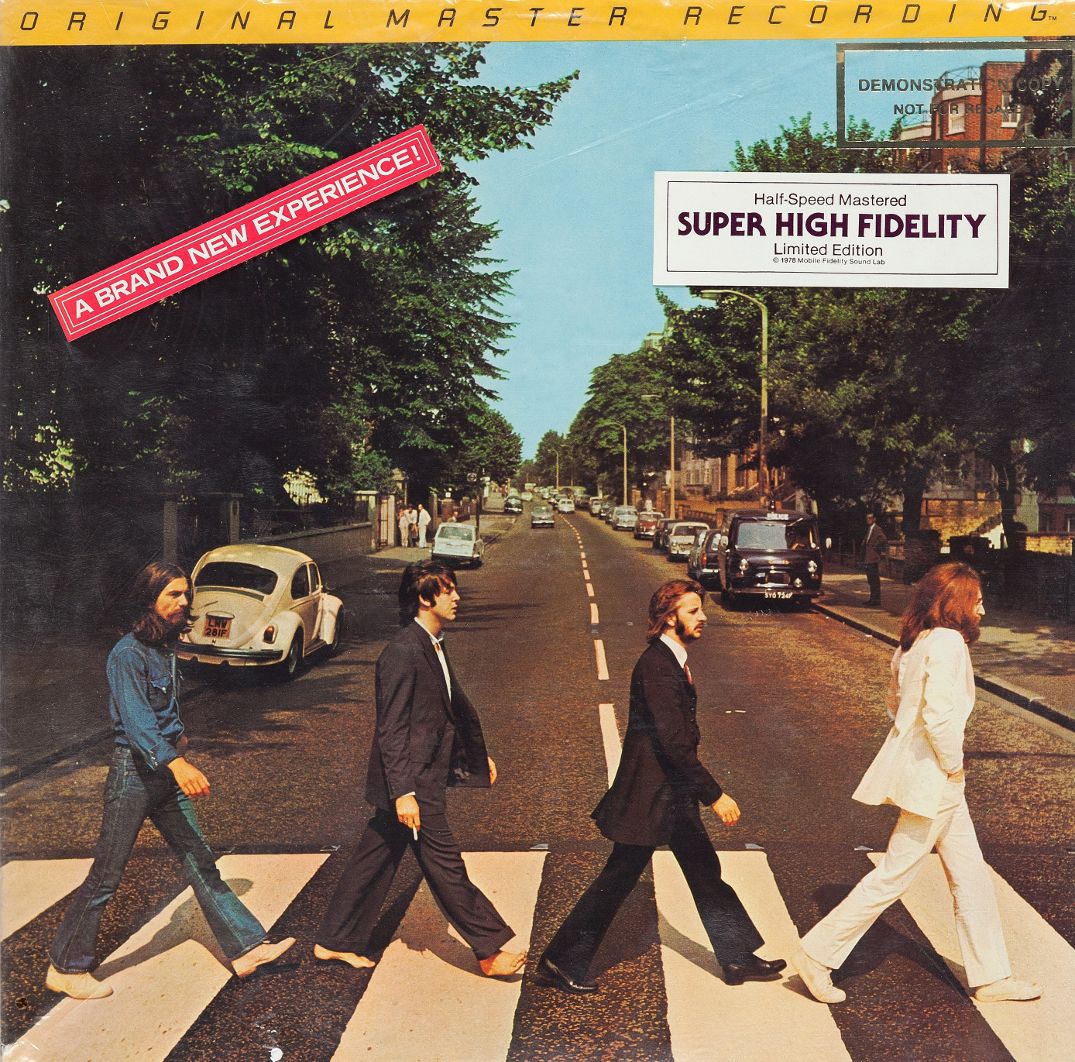 An interesting US vinyl edition of “Abbey Road” was released on December 28th, 1979, this being manufactured by Mobile Fidelity Sound Lab in Chatsworth, California as the first Beatles installment in their "Original Master Recording" series. Their practice was to prepare a new master utilizing half-speed mastering technology from the original master tapes, in this case using the leased sub-master from Capitol Records. Stickers on the shrinkwrap proclaimed this album as being “A Brand New Experience,” which proved to be the case. This version of the album sounded superior to all previous British and American pressings at that time. Unfortunately, this excellent edition of “Abbey Road” was only available for a short time and is quite collectible today. An interesting US vinyl edition of “Abbey Road” was released on December 28th, 1979, this being manufactured by Mobile Fidelity Sound Lab in Chatsworth, California as the first Beatles installment in their "Original Master Recording" series. Their practice was to prepare a new master utilizing half-speed mastering technology from the original master tapes, in this case using the leased sub-master from Capitol Records. Stickers on the shrinkwrap proclaimed this album as being “A Brand New Experience,” which proved to be the case. This version of the album sounded superior to all previous British and American pressings at that time. Unfortunately, this excellent edition of “Abbey Road” was only available for a short time and is quite collectible today.
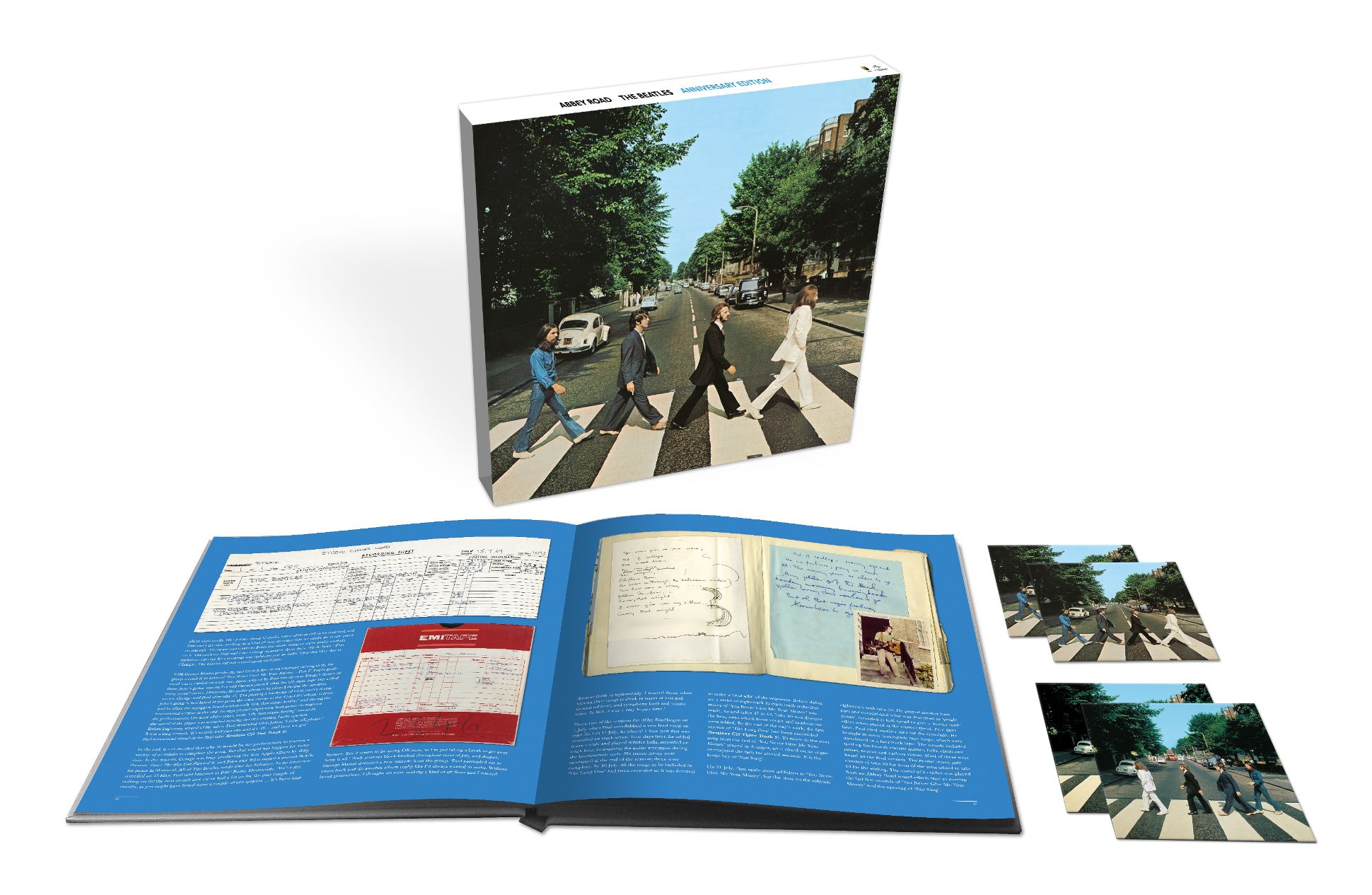 On September 27th, 2019, various other editions of "Abbey Road" were released in connection with its 50th Anniversary. The "Deluxe" 2CD set contains the new Giles Martin mix of the entire album as well as the never-before-heard "take one" of "Carry That Weight." as recorded on July 2nd, 1969. The "Triple Album" vinyl set and the "Super Deluxe" 3CD + Blu-ray edition contain these tracks as well, along with the isolated orchestral score of the "Golden Slumbers / Carry That Weight" medley and the July 30th, 1969 trial edit and mix of the entire "Abbey Road" medley, as described above, which contains "Carry That Weight" as it was recorded thus far. On September 27th, 2019, various other editions of "Abbey Road" were released in connection with its 50th Anniversary. The "Deluxe" 2CD set contains the new Giles Martin mix of the entire album as well as the never-before-heard "take one" of "Carry That Weight." as recorded on July 2nd, 1969. The "Triple Album" vinyl set and the "Super Deluxe" 3CD + Blu-ray edition contain these tracks as well, along with the isolated orchestral score of the "Golden Slumbers / Carry That Weight" medley and the July 30th, 1969 trial edit and mix of the entire "Abbey Road" medley, as described above, which contains "Carry That Weight" as it was recorded thus far.
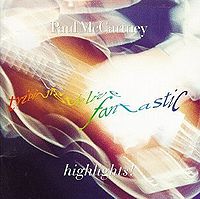 November 5th, 1990, was the release date for Paul's successful double-CD “Tripping The Live Fantastic,” which featured a live rendition of the final three segments of the “Abbey Road” medley, namely, “Golden Slumbers,” “Carry That Weight” and “The End.” For those who didn't want to buy the full double-CD package, a single live disc entitled “Tripping The Live Fantastic: Highlights!” was released a week later, on November 12th, 1990. This also contained the same live version of “Carry That Weight.” Although the original album peaked much higher on the Billboard album chart (#26), the “Highlights!” single disc eventually went platinum despite its weak chart showing at #141. November 5th, 1990, was the release date for Paul's successful double-CD “Tripping The Live Fantastic,” which featured a live rendition of the final three segments of the “Abbey Road” medley, namely, “Golden Slumbers,” “Carry That Weight” and “The End.” For those who didn't want to buy the full double-CD package, a single live disc entitled “Tripping The Live Fantastic: Highlights!” was released a week later, on November 12th, 1990. This also contained the same live version of “Carry That Weight.” Although the original album peaked much higher on the Billboard album chart (#26), the “Highlights!” single disc eventually went platinum despite its weak chart showing at #141.
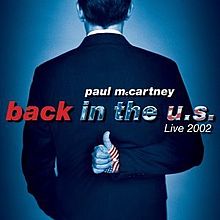 On November 1st, 2002, Paul's live album “Back In The US” was released in America featuring his solo piano performance of "Carry That Weight" described above. The album went Double-Platinum and peaked at #2 on the Billboard album chart. Paul's internationally released live album "Back In The World" also included this exact recording but it was not released in the US because of its similarity with "Back In The US." On November 1st, 2002, Paul's live album “Back In The US” was released in America featuring his solo piano performance of "Carry That Weight" described above. The album went Double-Platinum and peaked at #2 on the Billboard album chart. Paul's internationally released live album "Back In The World" also included this exact recording but it was not released in the US because of its similarity with "Back In The US."
Live Performances
 The Beatles never performed the song live but, as mentioned above, Paul and his new touring band thought to include "Golden Slumbers," "Carry That Weight" and "The End" on his "World Tour" well after the breakup of The Beatles. This tour ran from September 26th, 1989 (Drammenshallen Indoor Arena in Drammen, Sweden) to July 29th, 1990 (Chicago, Illinois). This three-song medley made for a suitable ending song on this tour, his first since his Wings UK Tour of 1979. The Beatles never performed the song live but, as mentioned above, Paul and his new touring band thought to include "Golden Slumbers," "Carry That Weight" and "The End" on his "World Tour" well after the breakup of The Beatles. This tour ran from September 26th, 1989 (Drammenshallen Indoor Arena in Drammen, Sweden) to July 29th, 1990 (Chicago, Illinois). This three-song medley made for a suitable ending song on this tour, his first since his Wings UK Tour of 1979.
Paul then included the above-described “You Never Give Me Your Money / Carry That Weight” piano medley on his “Driving World” tour of 2002, which spanned from April 1st (Oakland, California) to November 18th (Osaka, Japan). His 2003 “Back In The World” tour also featured this medley, this tour starting on March 25th (Paris, France) and ending on June 1st (Liverpool, England).
 Paul took a break from including the song in his set list for many years, only to resurrect it for his “On The Run” tour of 2011 and 2012. As a final encore, he and his band resumed performing the full “Golden Slumbers,” “Carry That Weight” and “The End” medley, this tour stretching from July 11th, 2011 (at Yankee Stadium in New York City, New York) to November 29th, 2012 (Edmonton, Canada). He did the same for his extensive “Out There” tour, which started on May 4th, 2013 (Belo Horizonte, Brazil) and finally concluded on October 22nd, 2015 (Buffalo, New York). This medley also concluded his shows for his “One On One” tour, stretching from April 13th, 2016 (Fresno, California) to December 16th, 2017 (Auckland, New Zealand), as well as his "Freshen Up" tour, running from September 17th, 2018 (Quebec City, Canada) to July 13th, 2019 (Los Angeles, California). He continued performing the medley during his "Got Back" tour, which ran from April 28th, 2022 (Spokane, Washington) to December 19th, 2024 (London, England). Paul took a break from including the song in his set list for many years, only to resurrect it for his “On The Run” tour of 2011 and 2012. As a final encore, he and his band resumed performing the full “Golden Slumbers,” “Carry That Weight” and “The End” medley, this tour stretching from July 11th, 2011 (at Yankee Stadium in New York City, New York) to November 29th, 2012 (Edmonton, Canada). He did the same for his extensive “Out There” tour, which started on May 4th, 2013 (Belo Horizonte, Brazil) and finally concluded on October 22nd, 2015 (Buffalo, New York). This medley also concluded his shows for his “One On One” tour, stretching from April 13th, 2016 (Fresno, California) to December 16th, 2017 (Auckland, New Zealand), as well as his "Freshen Up" tour, running from September 17th, 2018 (Quebec City, Canada) to July 13th, 2019 (Los Angeles, California). He continued performing the medley during his "Got Back" tour, which ran from April 28th, 2022 (Spokane, Washington) to December 19th, 2024 (London, England).
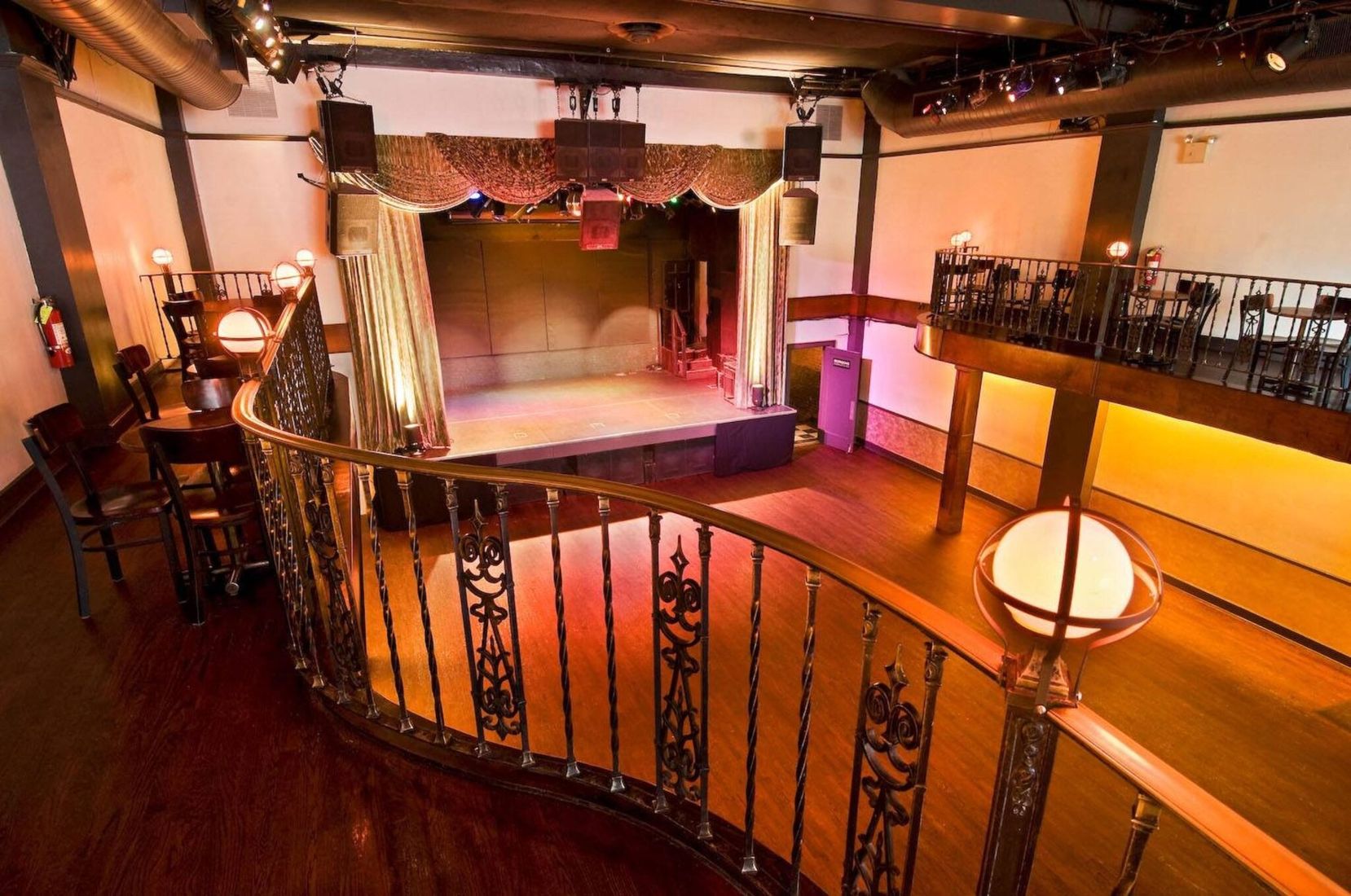 Interestingly, McCartney and his band played a surprise three night residency at the very quaint Bowery Ballroom in New York City on February 11th, 12th and 14th, 2025, this final night being Valentine's Day. The group performed the "Golden Slumbers" medley to close each of these shows at this 575-capacity Manhattan venue. Two days later, McCartney and his group gave a live television performance of the medley on February 16th, 2025 as the finale to the Saturday Night Live 50th Anniversary program. Interestingly, McCartney and his band played a surprise three night residency at the very quaint Bowery Ballroom in New York City on February 11th, 12th and 14th, 2025, this final night being Valentine's Day. The group performed the "Golden Slumbers" medley to close each of these shows at this 575-capacity Manhattan venue. Two days later, McCartney and his group gave a live television performance of the medley on February 16th, 2025 as the finale to the Saturday Night Live 50th Anniversary program.
Conclusion
So as the impressive final Beatles album draws to a close (their previously recorded "Let It Be" soundtrack album not being released until seven months later), the "Carry That Weight" segment of the lengthy "Abbey Road" medley dramatically stands out. Since the listener is left to his own interpretation of what "weight" needs to be carried, speculation ensues.
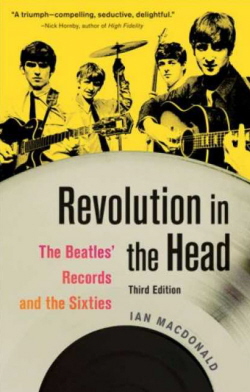 Tim Riley, in his book “Tell Me Why,” explains it as “the larger implications of fame and notoriety – obligation and commitment – the weight in the singer's heart.” He then goes on to state that “the ironies become palpable; the love song Paul sings to The Beatles spells out the price that fame has exacted from their friendship.” Ian MacDonald, in his book “Revolution In The Head,” explains: “No matter what they do separately after this, (Paul) correctly guesses, it'll never match what they did together; the world will always hark back to their glory days as a foursome and they'll carry the weight of their achievement as The Beatles for the rest of their individual careers.” Tim Riley, in his book “Tell Me Why,” explains it as “the larger implications of fame and notoriety – obligation and commitment – the weight in the singer's heart.” He then goes on to state that “the ironies become palpable; the love song Paul sings to The Beatles spells out the price that fame has exacted from their friendship.” Ian MacDonald, in his book “Revolution In The Head,” explains: “No matter what they do separately after this, (Paul) correctly guesses, it'll never match what they did together; the world will always hark back to their glory days as a foursome and they'll carry the weight of their achievement as The Beatles for the rest of their individual careers.”
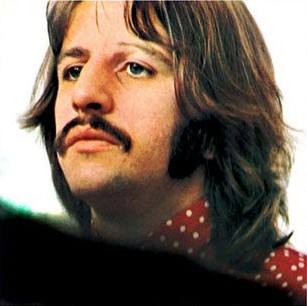 Both of these interpretations are very fanciful to say the least, retrospectively assuming that its composer was summing up his band's career in song. And to think: “Carry That Weight” was just Paul simply wanting to write a fictional country-and-western song for Ringo to sing! Both of these interpretations are very fanciful to say the least, retrospectively assuming that its composer was summing up his band's career in song. And to think: “Carry That Weight” was just Paul simply wanting to write a fictional country-and-western song for Ringo to sing!
Song Summary
“Carry That Weight”
Written by: John Lennon / Paul McCartney
- Song Written: December 1968 to July 2, 1969
- Song Recorded: July 2, 3, 4, 30, 31, August 15, 1969
- First US Release Date: October 1, 1969
- First US Album Release: Apple #SO-383 “Abbey Road”
- British Album Release: Apple #PCS 7088 “Abbey Road”
- US Single Release: n/a
- Highest Chart Position: n/a
- Length: 1:37
- Key: C major
- Producer: George Martin
- Engineers: Phil McDonald, Geoff Emerick, Chris Blair, John Kurlander, Alan Parsons
Instrumentation (most likely):
- Paul McCartney - Lead and Harmony Vocals, Piano (1905 Steinway Vertegrand), Rhythm Guitar (1962 Epiphone ES-230TD Casino)
- George Harrison - Bass (1961 Fender Bass VI), Lead Guitar (1968 Fender Rosewood Telecaster)
- Ringo Starr - Drums (1968 Ludwig Hollywood Maple), timpani, backing vocals
- unknown - violin
- unknown - violin
- unknown - violin
- unknown - violin
- unknown - violin
- unknown - violin
- unknown - violin
- unknown - violin
- unknown - violin
- unknown - violin
- unknown - violin
- unknown - violin
- unknown - viola
- unknown - viola
- unknown - viola
- unknown - viola
- unknown - cello
- unknown - cello
- unknown - cello
- unknown - cello
- unknown - string bass
- unknown - horn
- unknown - horn
- unknown - horn
- unknown - horn
- unknown - trumpet
- unknown - trumpet
- unknown - trumpet
- unknown - trombone
- unknown - bass trombone
Written and compiled by Dave Rybaczewski
|
IF YOU WOULD LIKE TO MAKE A DONATION TO KEEP THIS WEBSITE UP AND RUNNING, PLEASE CLICK BELOW!
Sign Up Below for our MONTHLY BEATLES TRIVIA QUIZ!
|